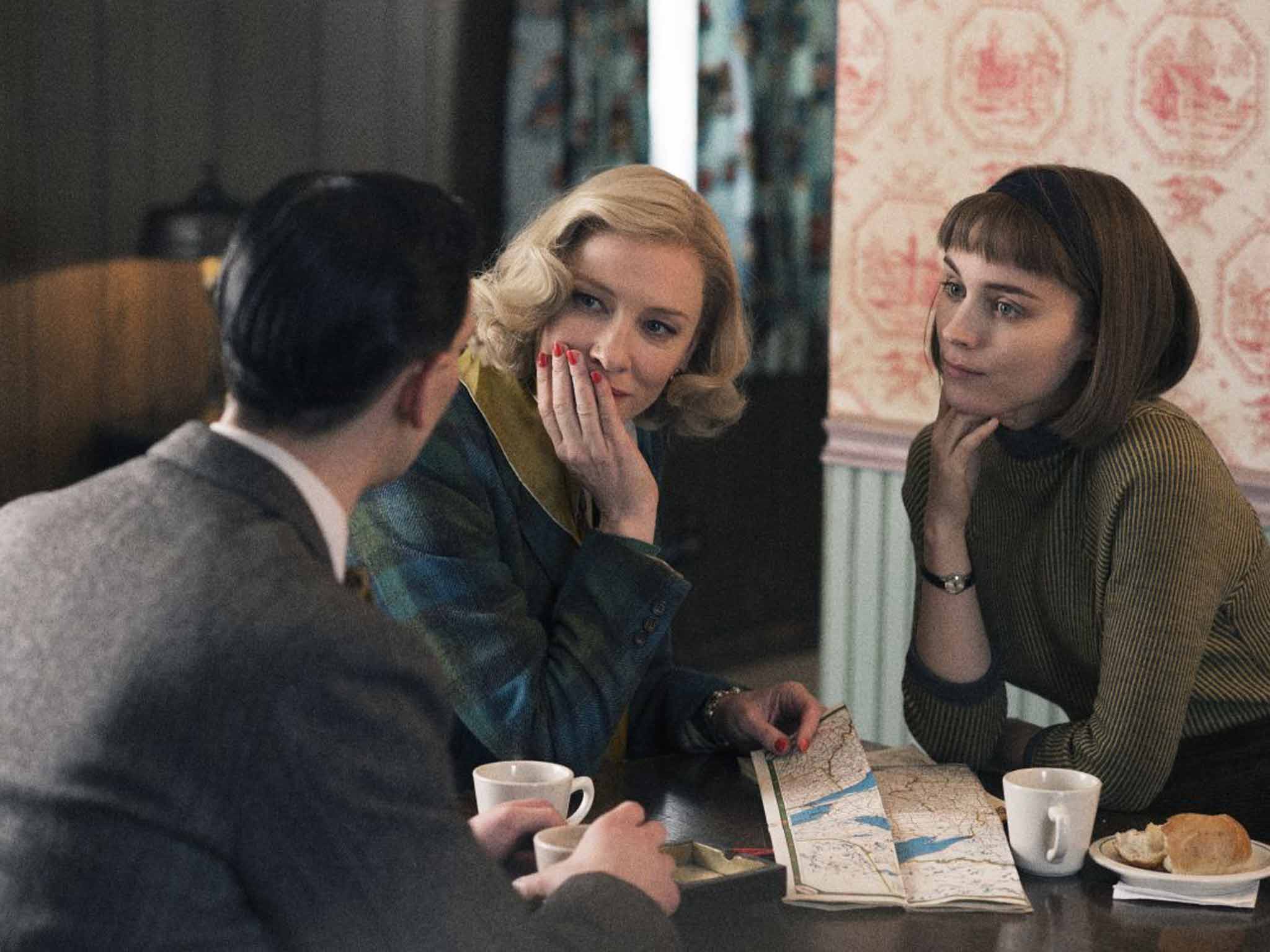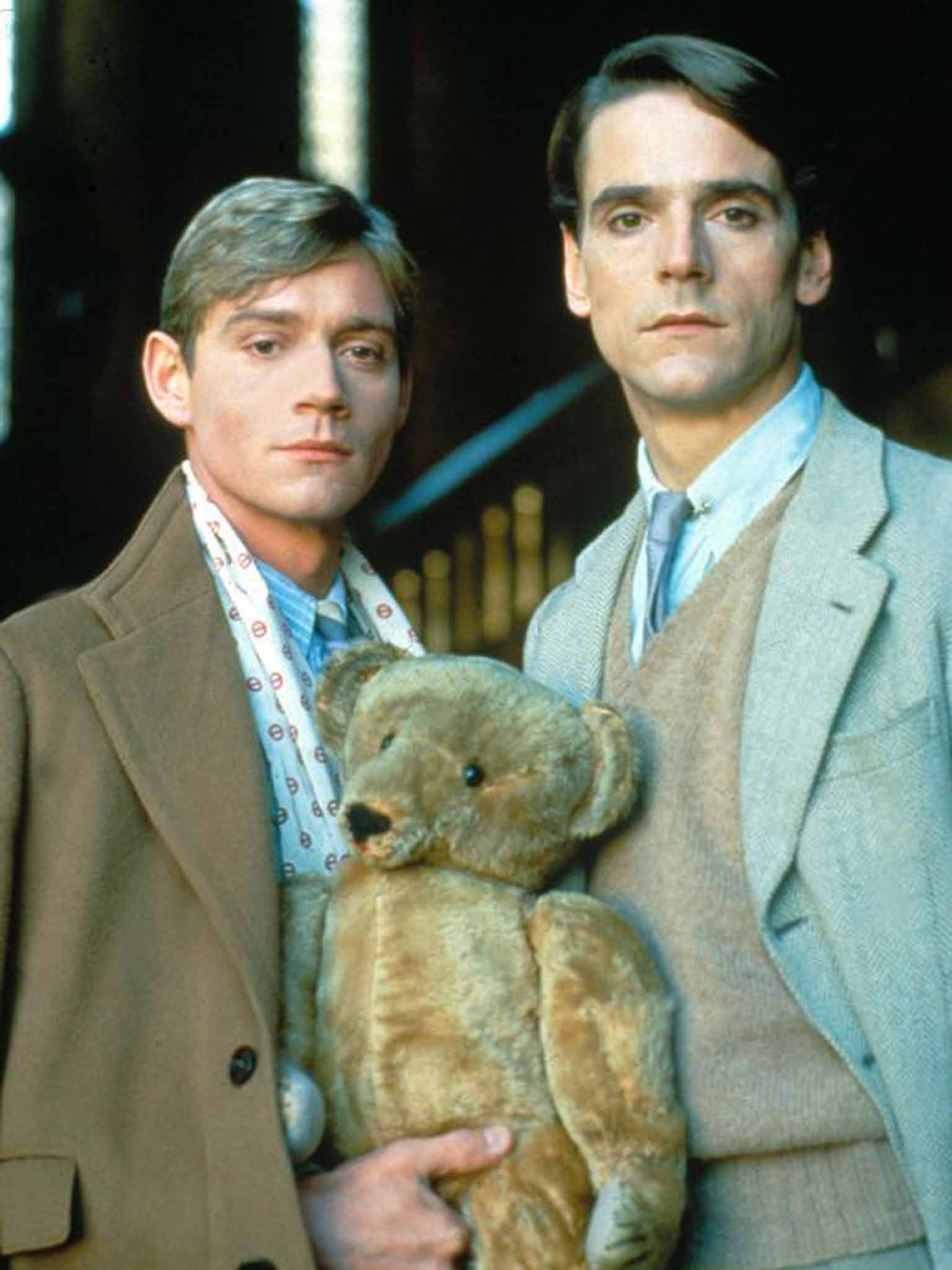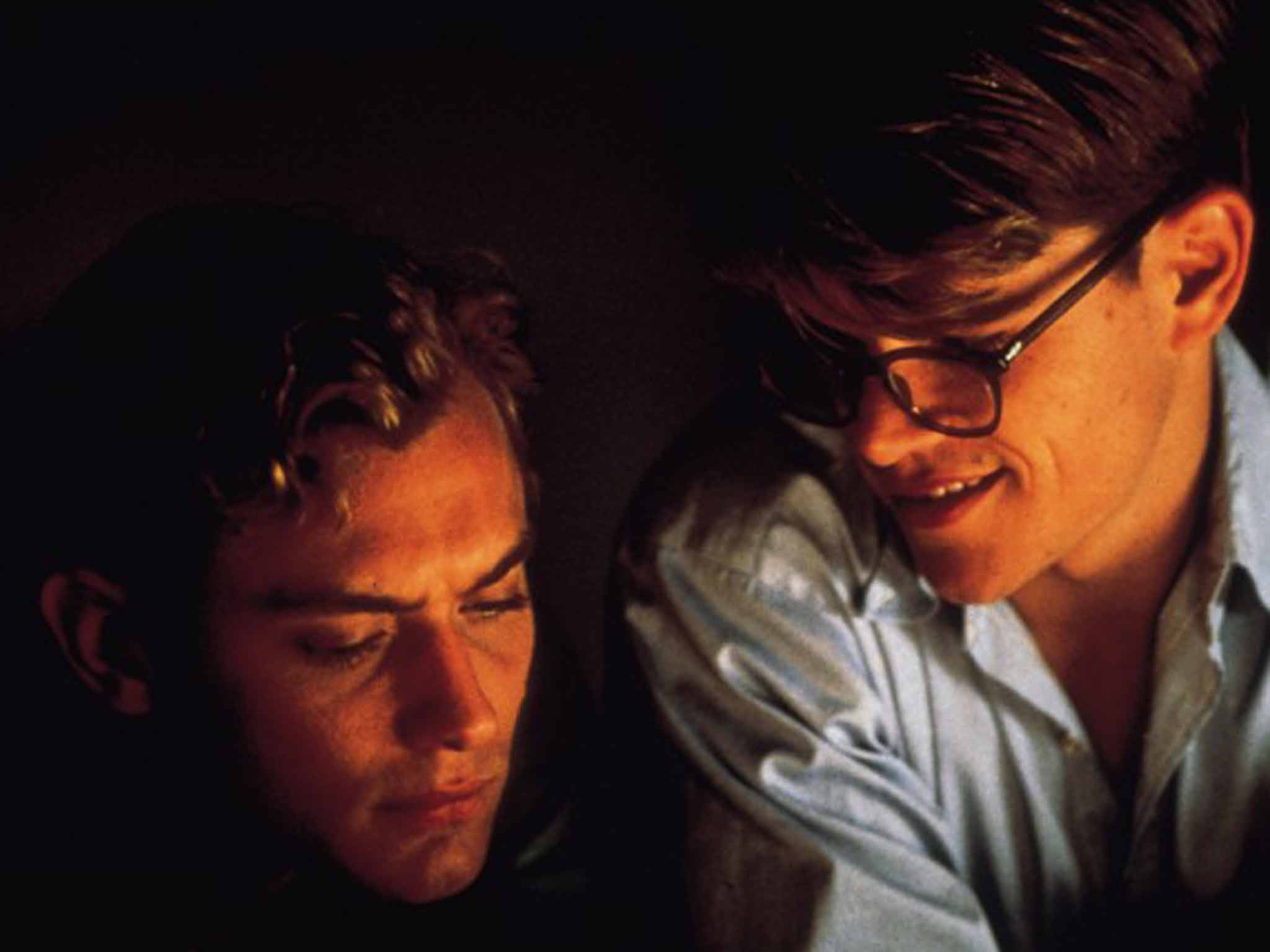'Carol', Patricia Highsmith, and how gay literature found its voice in the 1950s
Patricia Highsmith's lesbian romance novel 'Carol', now a successful film, was published in 1952 and marked the point when gay relationships in literature tentatitively started to step out of the shadows.

When the 2016 season for glitzy film awards gets under way, the hosts might consider a special set-design honour for the New York department stores of the early 1950s. Might the gong for best period emporium go to Bartocci's, where Saoirse Ronan in Brooklyn hesitantly adjusts to metropolitan life after arriving off the boat from Ireland, or to Frankenberg's, where a chance encounter with Cate Blanchett at the toy counter seals the fate of Rooney Mara's forlorn salesgirl in Carol? Those films from John Crowley and Todd Haynes respectively are both tipped, alongside their stars, for a whole display-cabinet's worth of trophies. Yet they have much more in common than settings that evoke, rather brilliantly, the tense and regimented rituals of the new mass affluence in postwar America.
Most obviously, both films adapt books by gay novelists that – one at the time, the other from a distance of more than half a century – investigate the life-changing passions that can smash every neatly dressed shop window of social conformity. Patricia Highsmith's Carol was published in 1952, the year that Colm Tóibín's heroine migrates from County Wexford. True, Tóibín's heroine Eilis Lacey must “merely” defy family piety and acute homesickness in order to pursue her romance with an Italian-American plumber, whereas Highsmith's Therese Belivet and Carol Aird play for higher stakes, against steeper odds.
At the time, mothers accused of lesbian affairs in divorce proceedings – as happens to Carol – risked the loss of any access to their children. But Eilis too will lose a kind of home – and Irish roots that still tug hard – by following her heart. In different keys, the books and films measure the quiet earthquake of a rebel love in an anxious time. Both insist that the ultimate sin is, in the words of a letter Carol writes to her beloved Therese, “to live against one's grain”.

For a writer such as Tóibín or a film-maker like Haynes, those years of the early 1950s have a silken and shadowy allure. Undergraduate clichés about the transgressive relationship that subverts a climate of repression will hardly pin it down. Rather, this is a time when, in fiction in particular, desire and discretion walk hand in hand. Not only does the love that dared not speak its name gradually find a voice. Sometimes, that voice can carry quite a way.
Carol, first published as The Price of Salt two years after her debut novel Strangers on a Train, saw the light of day under the pseudonym of “Claire Morgan”. Alfred Hitchcock's film of her identity-swap thriller had already appeared. To many readers, Highsmith's debut carries its own homoerotic subtext – as does her later classic of murder as a sub-species of romance, The Talented Mr Ripley. But agents and publishers feared that she had much to lose by confinement in a gay enclave. Hence the pseudonym. Still, The Price of Salt triumphed, garnering rave reviews. According to Highsmith, writing in 1989, a later paperback edition “sold nearly a million copies”. For years afterwards, grateful fan mail flooded in to “Claire Morgan”, from men as much as women.
Crucially, Carol and Therese's love has a future. Above all, the happy ending won the devotion of her correspondents. “Prior to this book,” its author wrote, “homosexuals, male and female, in American novels had to pay for their deviation by cutting their wrists, drowning themselves in a swimming pool, or by switching to heterosexuality”. Lesbian pulp fiction thrived, but it could stay safe from US obscenity laws only if its hapless heroines met one of those fates.
In Britain, meanwhile, Radclyffe Hall's landmark lesbian romance The Well of Loneliness – victim of a notorious prosecution in 1928 – re-emerged without hindrance in 1949. An author such as Mary Renault could, before she turned to the homoerotic adventures in Ancient Greece that made her a bestseller, deal fairly frankly with gay themes in The Charioteer (1953). At that moment, it helped to have a protagonist, like Renault's Laurie Odell, whose war service put him beyond puritan reproach. A good war opened doors, and raised defences. The patrician Gore Vidal's naval exploits grew him an extra skin when his gay novel The City and the Pillar scandalised moralising critics in 1948. In contrast, the thoroughly marginalised James Baldwin, black and gay, sought freedom in exile in Paris – and put it to trail-blazing use with Giovanni's Room in 1956.

On this side of the ocean, the great English art of Higher Euphemism continued to bloom. In 1945, Evelyn Waugh could make Charles and Sebastian's affair the fulcrum of Brideshead Revisited while leaving enough wriggle-room to make denials of physical intimacy just about plausible. From Angus Wilson's Hemlock and After (1952) to Iris Murdoch's The Bell (1958), a succession of major novels opened the closet door, inch by inch. Lifelong bliss might have been in short supply (as for conventionally married couples in the era's fiction). Still, plenty of protagonists managed to avoid either suicide or conversion. A lyrical sub-genre of the homoerotic English pastoral bore fruit in the works of Denton Welch. Post-war reticence framed his work, but not outright repression. Writing about Welch, his admirer Alan Bennett remarked that “By the 1960s, it's not only the Nissen huts that have gone, but an innocence too.”
Innocence need not mean ignorance. Gay-themed stories of the 1950s often blossom in the hazily-defined margin between speech and silence, candour and concealment. In literature, as in life, prejudice still mandated prudence. Through the early 1950s, an anti-homosexual pogrom led by Home Secretary Sir David Maxwell Fyfe caught high-profile figures such as John Gielgud and Lord Montagu in its web of prosecutions. In the arts, any lapse into sexual explicitness still risked the wrath of magistrates – although, in 1959, the newly passed Obscene Publications Act offered the defence of literary merit.
For all the persecution, the forces of tolerance grew in strength. With only one dissenting voice, the Establishment paladins of the Wolfenden Committee recommended in 1957 that “homosexual behaviour between consenting adults in private should no longer be a criminal offence”. Even in 1954, Lord Montagu had been sentenced to 12 months' imprisonment, but left court to find a cheering crowd outside. In its modest fashion, the English novel of gay life tiptoed through the Fifties with steadily-rising confidence. Look at the output of the prolific Francis King, and you will find circumspection – but not cowardice.
Gay writers also drew obliquely on their own experience to fashion romances between star-crossed heterosexual lovers divided by class, by background, or by a wedding ring. By 1945, this genre of smouldering passion doused by duty and convention had reached the steam-fogged perfection of David Lean's Brief Encounter – drawn from a play by Noel Coward, Still Life. Coward was not the only gay master of the doomed straight affair. The whispered anguish of stricken couples underpins the plays of Terence Rattigan, from The Deep Blue Sea to Separate Tables. In the latter work, Rattigan had in a first draft intended that his disgraced Major Pollock should have ruined himself with young men rather than women.
Back in the US, the anti-Communism of the McCarthy era widened its net to draw in gay victims – labelled as blackmail risks or even innate conspirators. In 1950, an investigation led to the expulsion of 91 gay employees from the State Department. Yet in the film of Carol, as in Highsmith's life, it was policing by psychiatry that posed a more immediate threat to the self-determination of homosexual women. In the movie, Carol agrees to a course of psychotherapy to “cure” her of her love and so safeguard some access to her daughter. In the late 1940s, Highsmith herself underwent more than 30 psychoanalytic sessions in New York. For a while, she wished to marry British-born writer Marc Brandel, and swallowed the orthodoxy that such therapy might make her “normal”.
It was this pointless rigmarole that indirectly led to The Price of Salt. In December 1948, the hard-up fledgling author took a job at Bloomingdale's department store to help pay for her sessions with the analyst Eva Klein Lipshutz. There, in the toy department during the Christmas rush, she briefly talked to a sophisticated older blonde who wanted a doll for her daughter. That night, Highsmith sketched the story of the novel, which “flowed from my pen as if from nowhere”. The mysterious blonde had left an address. In June 1950, Highsmith took a bus to the New Jersey suburb where her unknown muse lived: not to meet, but to observe. Her diary records that she felt “quite odd – like a murderer in a novel”. She went back to stalk “Carol”, but never talked to her.
Out of that obsession came a timeless account of an affair that defies contempt and constraint. It proved that, even in early 1950s, same-sex love could be imagined without a punitive or tragic denouement. Besides, that place and time bred unhappiness – especially for women – in various guises. For his wonderfully illuminating biography of Highsmith, Beautiful Shadow, Andrew Wilson tracked down the original “Carol”. Her daughter remembered Mrs Kathleen Senn Richardson of Ridgewood, New Jersey as “incredibly self-sufficient, not afraid of anything”, but also as an “alcoholic”, “in and out of psychiatric hospitals”. What demons of 1950s discontent stalked Kathleen? Highsmith never knew. Neither, although she lived until 1995, did the author of Carol ever discover that its coolly elegant inspiration had, on 30 October 1951, closed her garage doors and “switched on the engine of her car”. “Carol” was dead before Carol ever lived.
Join our commenting forum
Join thought-provoking conversations, follow other Independent readers and see their replies
Comments